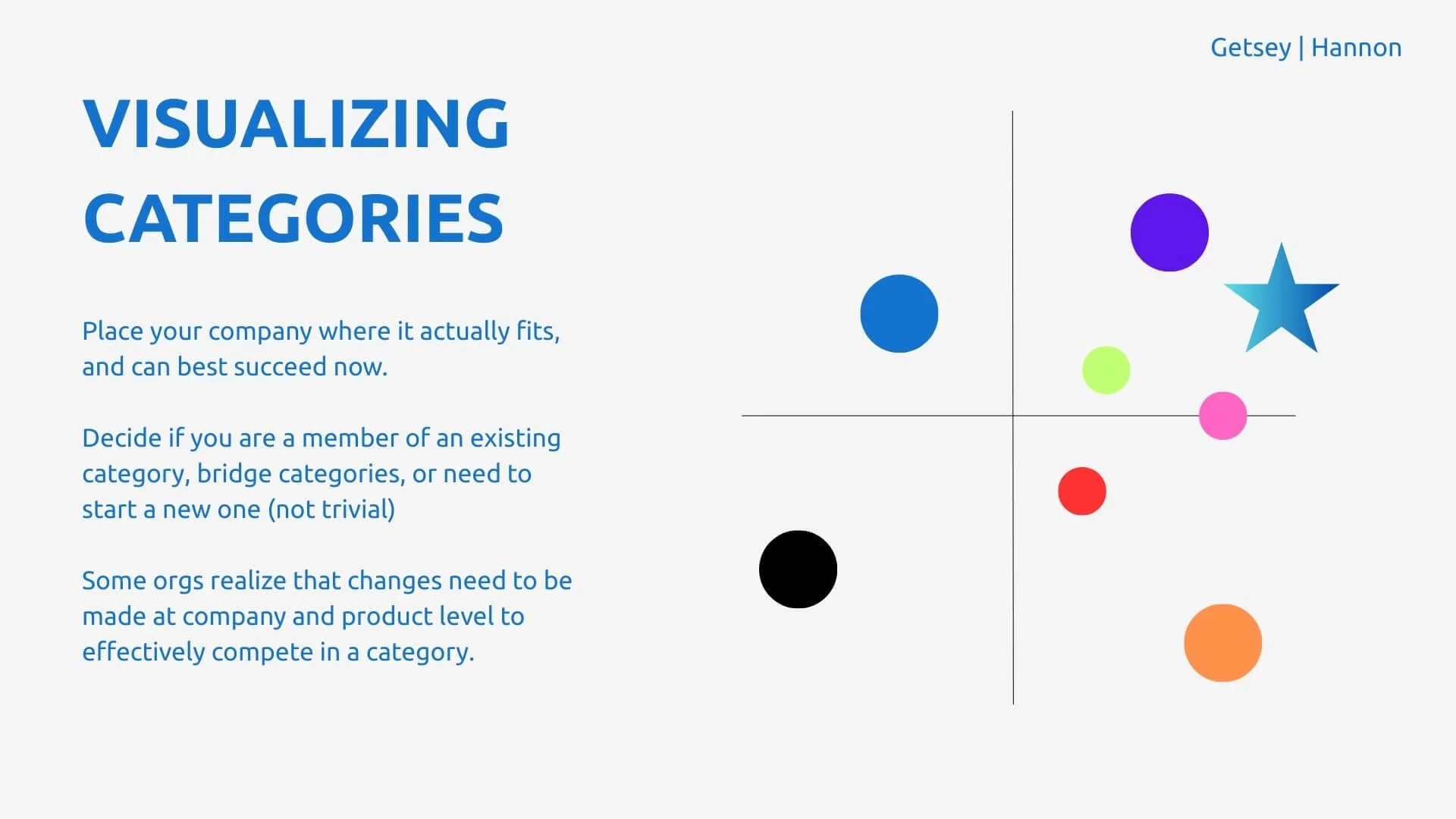Our 10-step approach to positioning
James Hannon and I have worked on positioning and messaging with hundreds of companies over the past 15 years or so, including 80+ startup companies that were acquired or went public.
Positioning and messaging comes first, before branding. Once positioning and messaging are sharp, it’s much easier to create and build a brand. It’s also much easier to do marketing, sell things and raise money from investors. If positioning and messaging aren’t sharp, then all of those things will be much harder, and you won’t really have a brand, you’ll just have a visual identity.
Also, worth noting—many successful companies aren’t really “brands” in the way people talk about brands. They’re “companies” more than brands, but their positioning, messaging and offerings are sharp and differentiated and their customers, investors and other stakeholders can easily understand, and make decisions about them more quickly and confidently.
About positioning
“Positioning refers to the place that a brand occupies in the minds of the customers and how it is distinguished from the products of the competitors.” - Wikipedia
Positioning is critical to any company or product’s success. It determines, very quickly, where customers, investors, employees, partners and other stakeholders place your offering in their minds vs. competing offerings.
Important reasons to get positioning right:
The words companies use to describe themselves and their offerings trigger many immediate associations in the minds of potential customers, investors, employers, industry watchers and other constituents and those associations define you
Positioning establishes mental reference points for the big customer problem a company solves, the category a company’s solutions fall into, the types of customers it serves, and who its competitors might be. Once those references are encoded in people’s minds, they’re not easy to change
When positioning is done properly, potential customers and other constituents can easily understand what a company or product does and how they’re different from other similar sounding offerings, and…
Investors, potential employees and other constituents will value the company more highly
When positioning is off or not sharp, potential customers have difficulty accurately understanding a company’s offering and investors/industry watchers assign a lower value
And when positioning is not strong, competitors have an easier time de-positioning a company
So it’s important to be very thoughtful and disciplined in your approach to capturing and expressing it.
Our 10-step Accelerant approach
Positioning is a reductive exercise. How little can you say and still get all the important points across? What a company does, the big problem it solves for customers, the category it’s part of, how it’s different from competitors, what kinds of customers want it most, who it competes with; all are very important. Also important—what a company doesn’t do, the kinds of customers it doesn’t serve, the categories it’s not in and the companies it doesn’t compete with.
Here are the 10 steps we take to sort it out:
Steps 1-7 are the critical preparation:
Define the big problem your company solves for customers. This is critical. Customers care a lot more about their problems than any company, and nothing grabs attention like a credible solution to their big problems
Research current categories and subcategories that attempt to solve the same or related problems
Do the same for leading competitors in those categories. Determine how they position, how they differentiate, and what benefits they say they deliver to customers
Define what your company does, and what it doesn’t do
Clearly define why your company’s solution is different than other options, and why this different approach delivers better outcomes for customers. Being different is key for grabbing attention; incrementally better isn’t compelling enough to compete effectively for mindshare
Define who you compete with, and who you don’t
Define which customers care about your company the most
Keep it short. If you need a lot of words or more than 3-5 bullets to address any of the points above, you still have work to do. You should be able to say it and write it with short snippets of content, and forcing brevity assures that every key point is significant. Nuance and detail can be added in messaging after you’ve arrived at a sharp positioning.
The steps above are all to inform the next step - drafting your company’s value proposition. This is where the rubber meets the road.
Draft a positioning statement. A positioning statement describes a product or service, its target audience, and how it meets a market need. Some people don’t think they’re useful and prefer value propositions instead. We like both - and think writing a positioning statement helps a company think hard and be concise about what they do, the problem they solve, who for, the benefits they provide, etc. Once a company can agree on all that internally, which is often challenging, then they can write a good, externally facing value proposition.
Draft your company’s value proposition. A value proposition addresses the biggest problem your company solves, or the greatest benefit or economic value your company delivers to the customers that care about you most. It needs to be very short - a sentence or two. If you need more, your have work to do. Once you have a high-clarity value proposition, you can work on compelling and memorable ways to say it.
Test your assumptions, draft positioning diagram and value proposition privately with employees, advisors, investors, customers and knowledgeable outsiders to get their reactions. Revise and iterate, as necessary.
Our positioning framework:
We use the following framework to guide our efforts with our clients. As we go through the steps, we fill in the blanks.
This is a framework we use to understand where a company actually fits now, and where it might need to go to succeed or outperform.
After doing the research, filling in the blanks, looking at the diagrams, collaborating and iterating with your team–clear insights always emerge, the thinking and words get sharper and sharper. You’ll eventually arrive at a position and value proposition that’s crisp, authentic, clear and differentiating—and you’ll have a head start on messaging around some of the most common questions people will ask about your company.
Thanks for reading. We hope you found this helpful. Please get in touch with comments, questions or additional thoughts.



